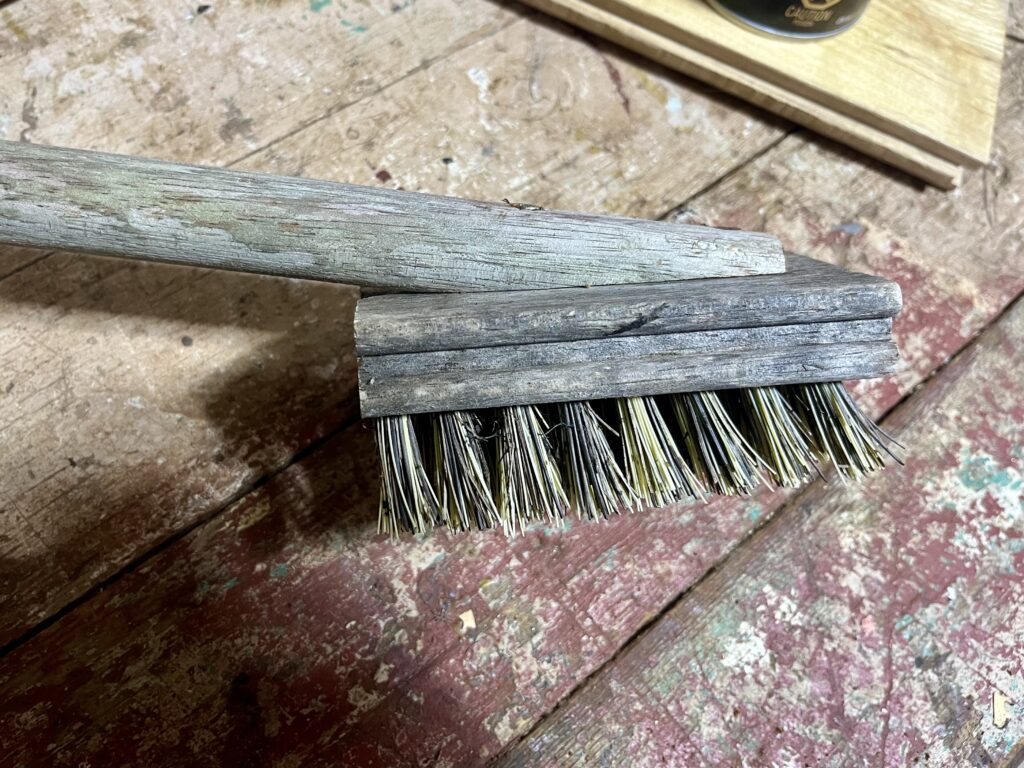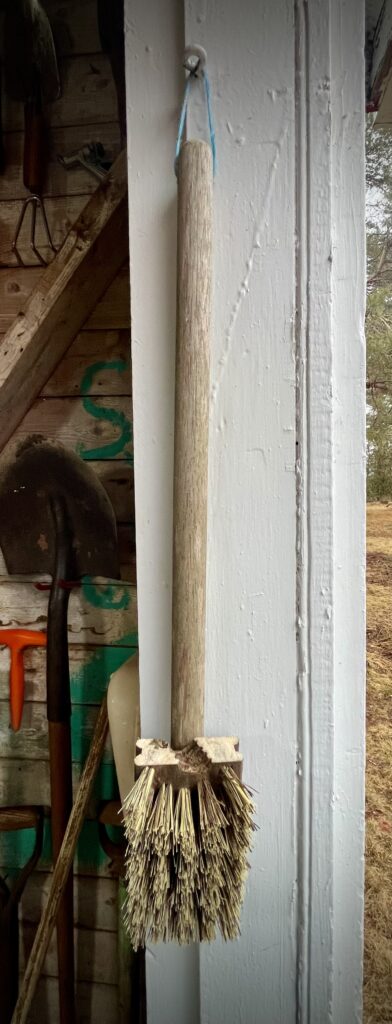My attempts to find a reasonably-priced wooden scrub brush with a handle to use outside to clean garden buckets, tools and feed and water dishes for the hens have never been successful. There are tons of plastic ones, but the bristles start falling out after just a few uses and the plastic breaks down over time.
A couple of years ago I found a small wooden brush, much like the scrub brushes my mother used to use to clean floors, but this one had a hole for a handle. The bristles seem to be non-plastic, probably from hogs, probably from China. Not ideal, no doubt a by-product of industrial farming, but better than plastic, I guess?
The brush worked okay, but was a bit too big and unwieldy for smaller items and, as I’m often cleaning things in sub-zero temperatures, not having a handle meant wet, cold hands.
Yesterday I looked at the brush and thought I might be able cut it in two and add a handle to each half, thereby creating a more nimble tool and getting two brushes out of one: one for garden things and one for hen things. So that’s what I did.




I pulled a wooden rake handle from my bucket of “pointy things used in the garden” (rebar, many old broom and rake handles, a couple of pieces from an old TV antenna) and cut one end so it would sit flat against the top of the brush. I screwed the handle on, cut it to the length I needed, and that was it, quick and easy. I added a hole at the end to attach some twine to hang it up and I’m all ready for more comfortable scrubbing.
The handle turned out to be made from a beautiful and extremely hard red wood. I’ve no idea what kind it is, and possibly it, too, is from China. It was a surprising pleasure to drill into it, pushing hard against the firm tight grain, and watch red curls come out in the drill bit. It is satisfying to know I am reusing this piece of wood after the rake head it once held fell apart, ensuring the tree that stretched and grew towards the light, sheltered birds, animals, insects and bacteria, brushed against its neighbour, felt the rain and watched the moon and sun dance across the sky, did not fall in vain.









